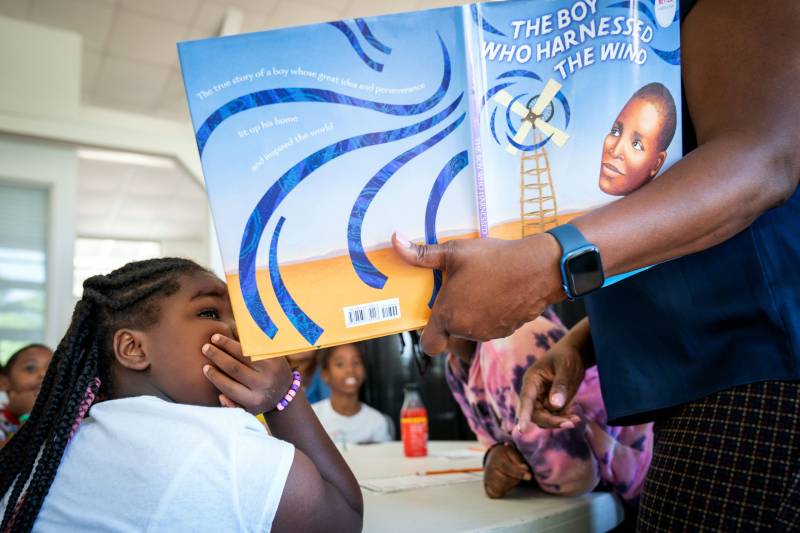Based on the tiny amounts of academic recovery and participation rates in the eight districts studied, summer programs were estimated to have offset only 2 to 3% of the learning losses in math and none in reading. “It’s really making quite a small dent,” said Morton. “It’s just such a small amount compared to the amount of recovery that’s needed.”
Most of the summer programs lasted only 15 to 20 days, shorter than programs in the pre-pandemic research. Students also missed many sessions. On average, enrolled students received only between 10 and 14 days of instruction. Participation in these optional summer school programs was generally low. Depending on the district, between 5 and 23% of students in kindergarten through eighth grade signed up.
Reading has always been less responsive to summer school than math. This is partly because many children who don’t attend summer school still read during June, July and August and they are also improving their vocabulary and comprehension skills. By contrast, kids are less likely to solve math problems on their own and there’s a bigger advantage for children who receive summertime instruction. But it could also be that reading instruction isn’t high quality in many summer schools.
The eight districts in the study were Dallas; Portland, Oregon; Alexandria, Virginia; Guilford County, North Carolina; Richardson, Texas; Suffern Central, New York, and Tulsa. One additional district was unnamed.
Morton and her colleagues tracked the academic performance of more than 16,0000 children who attended school during the summer of 2022, and compared them with similar children who didn’t attend summer school. For children who had the same baseline spring 2022 test scores, summer school didn’t help them to score much higher on a fall 2022 assessment, known as Measures of Academic Progress (MAP) tests, which is sold by NWEA.
If every child had participated in summer school in the eight districts that the researchers studied, the catch-up gains in math would have been enough to recover 10% of how much students fell behind, on average, during the pandemic. But because enrollment was so low, summer programming closed only about 2 to 3% of each district’s estimated learning loss in math.
Most students still need the equivalent of an extra four to five months of instruction – above and beyond regular school year instruction – to catch up to a pre-pandemic student; some students, especially low-income students, need much more, according to NWEA’s July 2023 learning loss update.
The district with the highest summer school enrollment rate, 23%, offered families of elementary school children an extended day, beginning at 8 a.m. and ending at 5:30 p.m. Those hours appealed to working parents, and summer school in 2022 doubled as free child care. However, this district, which was not identified in the study, curtailed hours for the summer of 2023 because it ran out of money.
More common across the districts were half-day programs. Academic instruction ranged from 45 minutes to two hours in reading and math each. The remainder of the time was filled with “enrichment” activities, from robotics to dance, often led by community groups.
Despite the dismal results, educators said they learned a few lessons. Online sign ups were a barrier and paper enrollment forms remain necessary for many families. Location matters too. Families were far more inclined to sign up for summer school at their children’s school. Sending a child to an unfamiliar building in a different neighborhood wasn’t as popular.
School administrators told Morton they had intentionally marketed summer school as a “summer camp,” full of fun activities, to make it more appealing to families and children. Administrators said they were very careful with their language, not wanting to single out students, stigmatize them or make them feel that they were behind.
“Maybe that is not always in the best interest of the student,” Morton said, concerned that a soft sell approach didn’t attract children who need extra instruction the most. She thinks that clearer messaging – telling parents directly that their kids were behind and needed extra summer support – would have been more convincing.
That might be good advice – but it carries a risk for educators. Parents could end up blaming schools for allowing their children to fall so far behind. Confidence in public education is near a record low, according to a recent Gallup Poll. The global emergency stage of the pandemic may be over, but now the nation’s students and public schools are in need of intensive care.


